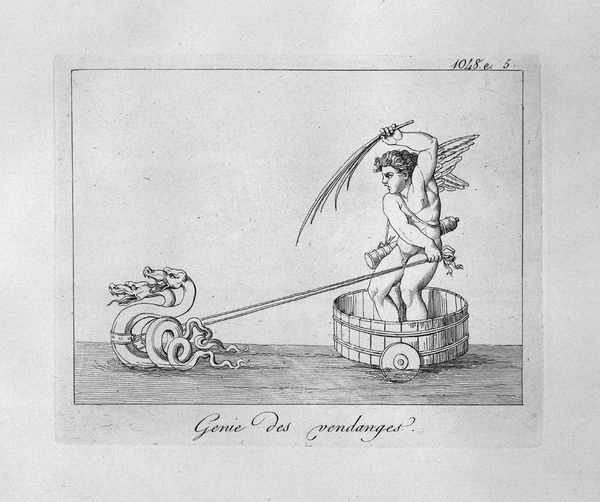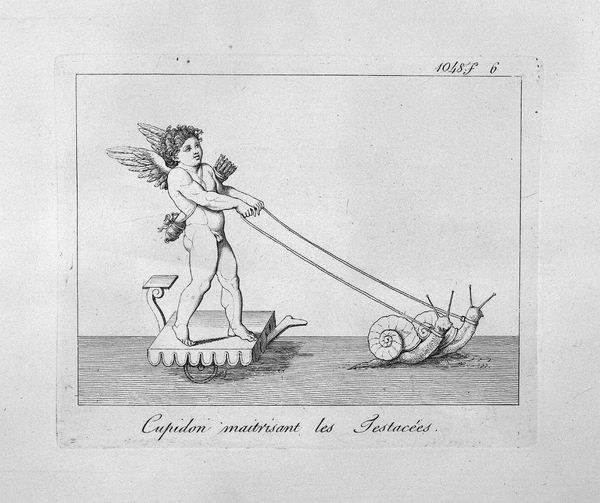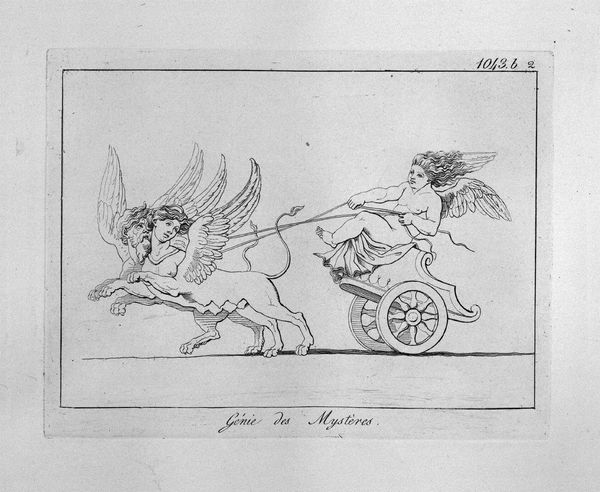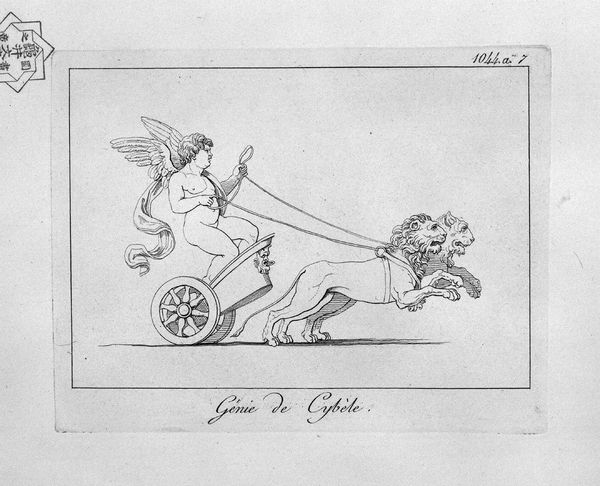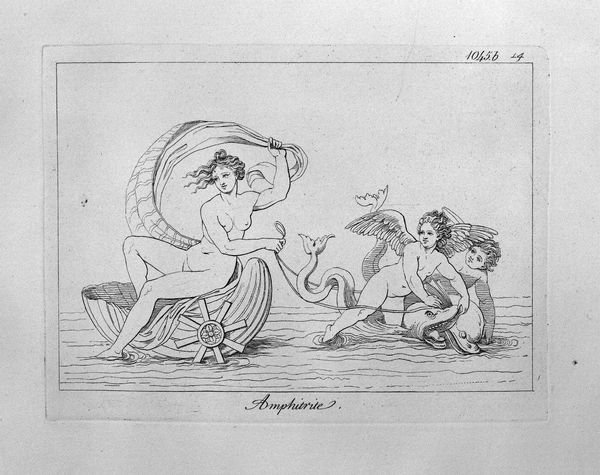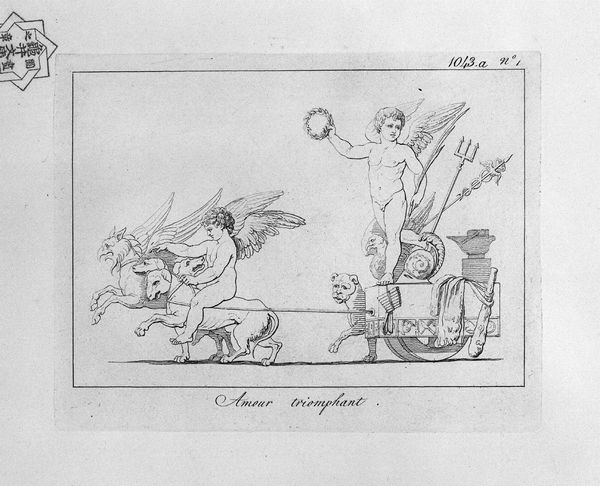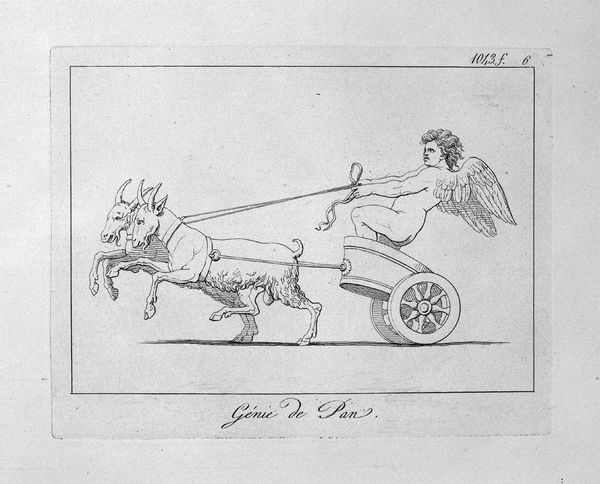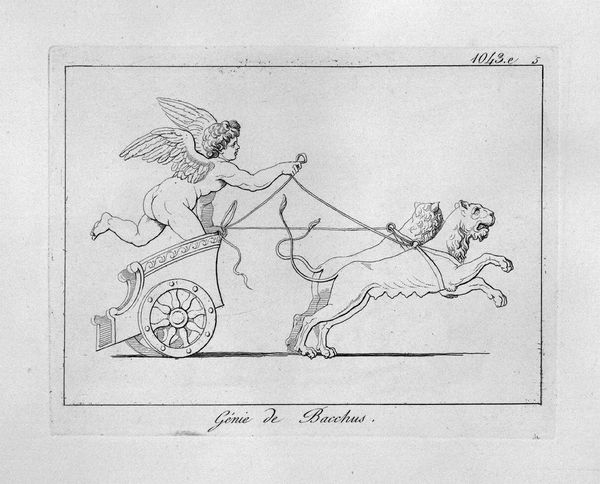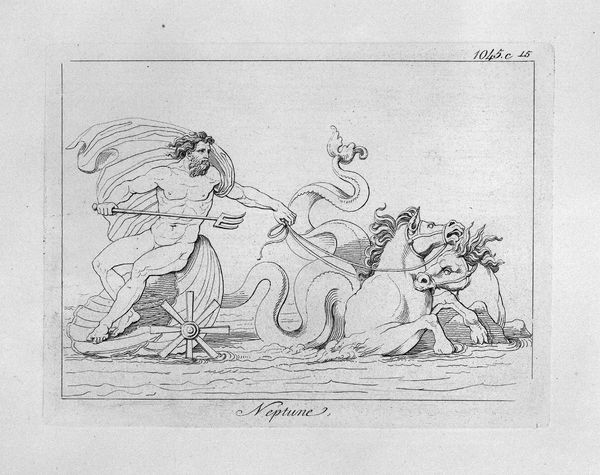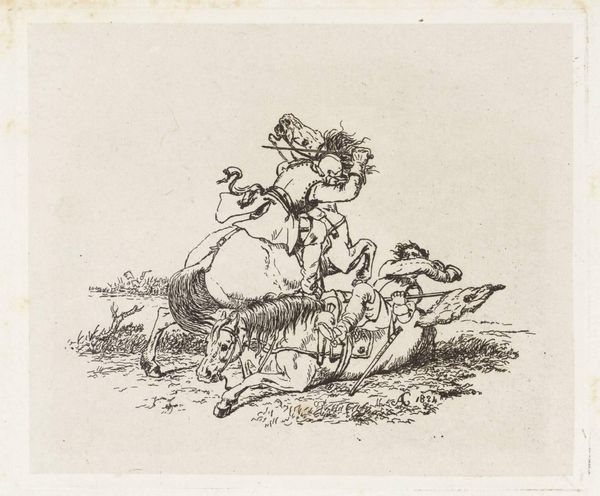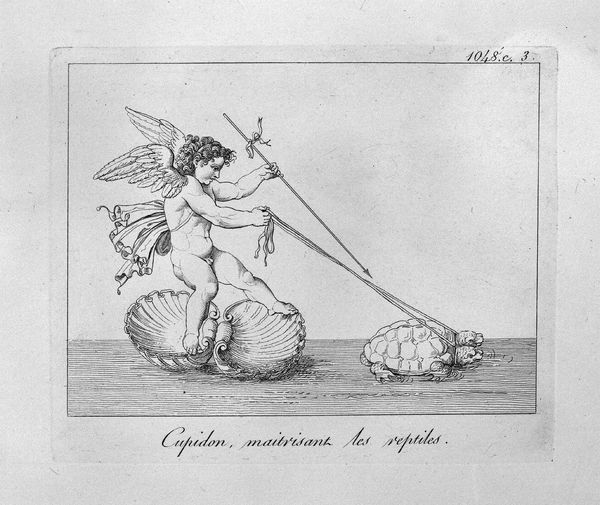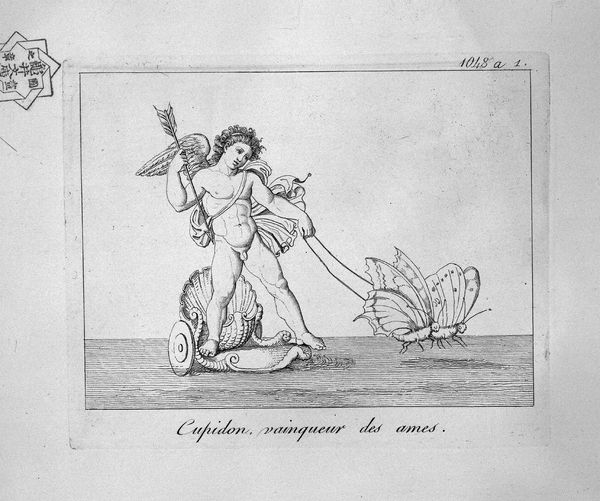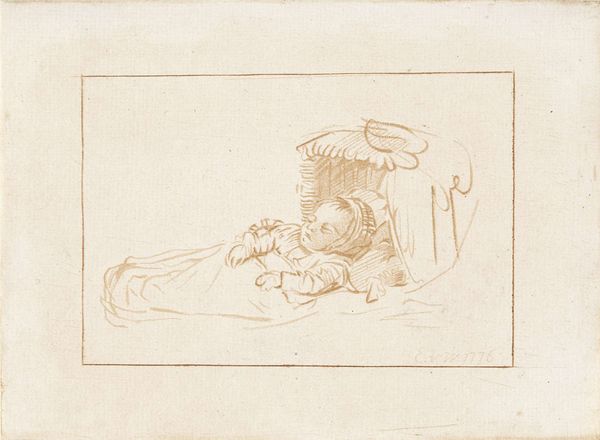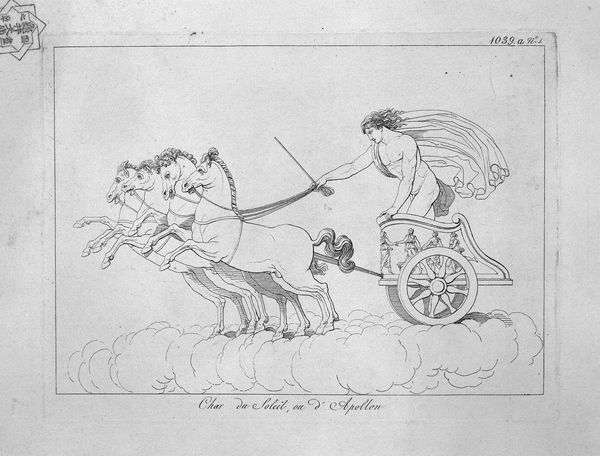
print, engraving
#
neoclacissism
#
allegory
# print
#
classical-realism
#
figuration
#
roman-mythology
#
mythology
#
line
#
engraving
Copyright: Public domain
Editor: So, this is "Genius of the races," an engraving by Giovanni Battista Piranesi. It looks like a neoclassical piece, all done in fine lines. There's a winged figure in a chariot being pulled by swans. What do you make of this unusual combination? Curator: Well, on the surface it's easy to see it as just a decorative piece reflecting the classical revival. But let's dig a little deeper, shall we? Who do you think this 'genius' represents, and what 'races' might Piranesi be alluding to? Consider the power dynamics inherent in the image – who is in control and who is being controlled? Editor: I guess the 'genius' is some sort of allegorical figure. Is it cupid? And the races, could that be about the different types of people then? I’m not sure I fully grasp the control aspect, though. Curator: It is possible. Think about the context of the late 18th century – the height of the Enlightenment, but also of colonialism and the burgeoning slave trade. Look at the composition: this winged figure forcefully drives the swans forward, wielding a palm branch almost like a weapon. What does that evoke for you, within the setting of colonial ambition and dominance? Editor: So, maybe the image is about the forceful subjugation of others, masked in classical allegory. It's unsettling how beauty can be used to normalise something so... oppressive. Curator: Precisely. And remember, Piranesi was deeply interested in the power of Rome, which was built on similar systems of control and domination. Engaging with this kind of imagery critically allows us to see how power is coded within the visual language of art. How does this complicate your initial view? Editor: It really does make me think differently. It's no longer just a charming scene; it’s a reflection on power and maybe even exploitation disguised as something innocent. It reminds me that art is never truly neutral. Curator: I couldn't agree more. This image certainly invites more dialogue about these important themes, especially when considering the historical backdrop.
Comments
No comments
Be the first to comment and join the conversation on the ultimate creative platform.
